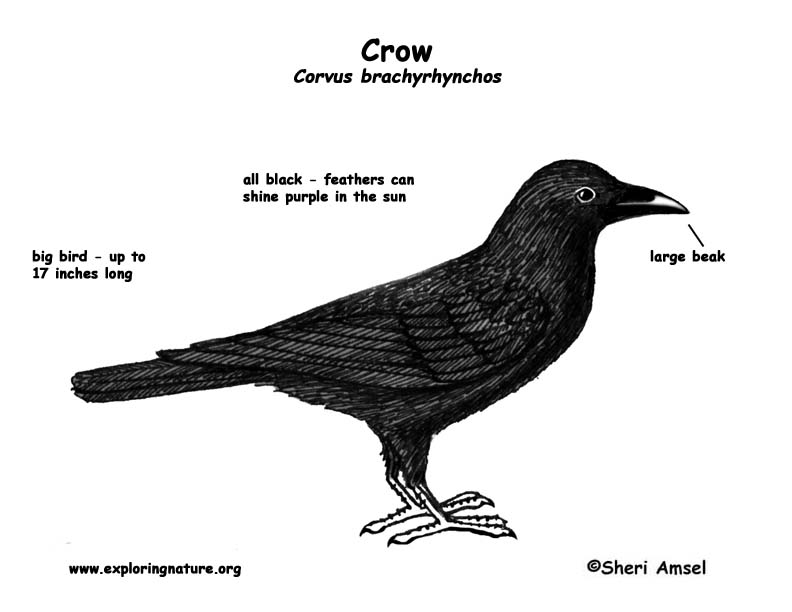

They are found in Canada and all across the U.S. down into Mexico. They spend the winter in the southern part of their range.
They are found in woodlands, fields, marshes, farms, towns and cities.
They are a big bird, up to 17 inches long. They are all black, but their feathers can shine purple in the sun. Males and females look alike.
They flap wings in flight instead of gliding like hawks. Distinctive caw call.
They will eat what they can find (scavenger). They will eat plants, fruits, eggs, insects, frogs, fish and even dead animals (carrion). They like to wash their food in water if they are near it and will hide it and come back for it later.
They build their nests out of twigs and branches high up in tall deciduous trees. It is not unusual to see a crow’s nest 60 feet off the ground. In dry places, they will build their nests in trees along the rivers and streams.
Kingdom: Animalia
Phylum: Chordata
Subphylum: Vetebrata
Class: Aves
Order: Passeriformes
Family: Corvidae
Genus: Corvus
Species: C. brachyrhynchos
When you research information you must cite the reference. Citing for websites is different from citing from books, magazines and periodicals. The style of citing shown here is from the MLA Style Citations (Modern Language Association).
When citing a WEBSITE the general format is as follows.
Author Last Name, First Name(s). "Title: Subtitle of Part of Web Page, if appropriate." Title: Subtitle: Section of Page if appropriate. Sponsoring/Publishing Agency, If Given. Additional significant descriptive information. Date of Electronic Publication or other Date, such as Last Updated. Day Month Year of access < URL >.
Amsel, Sheri. "Crow" Exploring Nature Educational Resource ©2005-2024. December 14, 2024
< http://exploringnature.org/db/view/198 >

